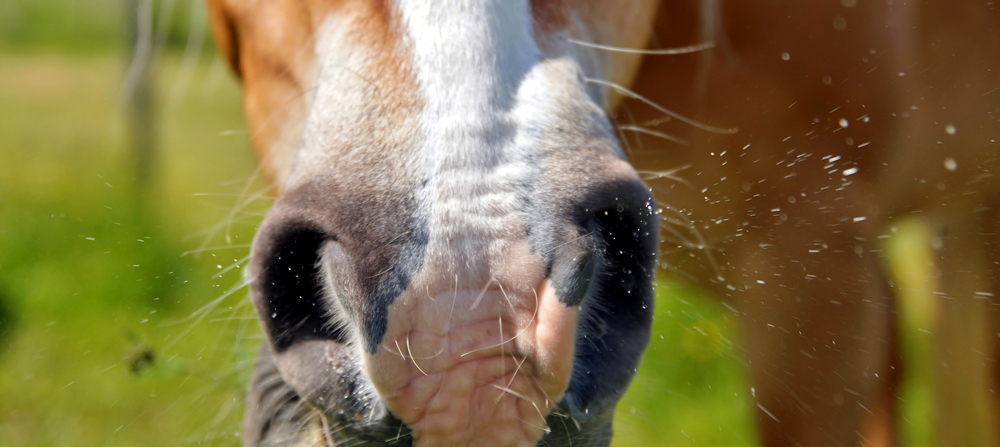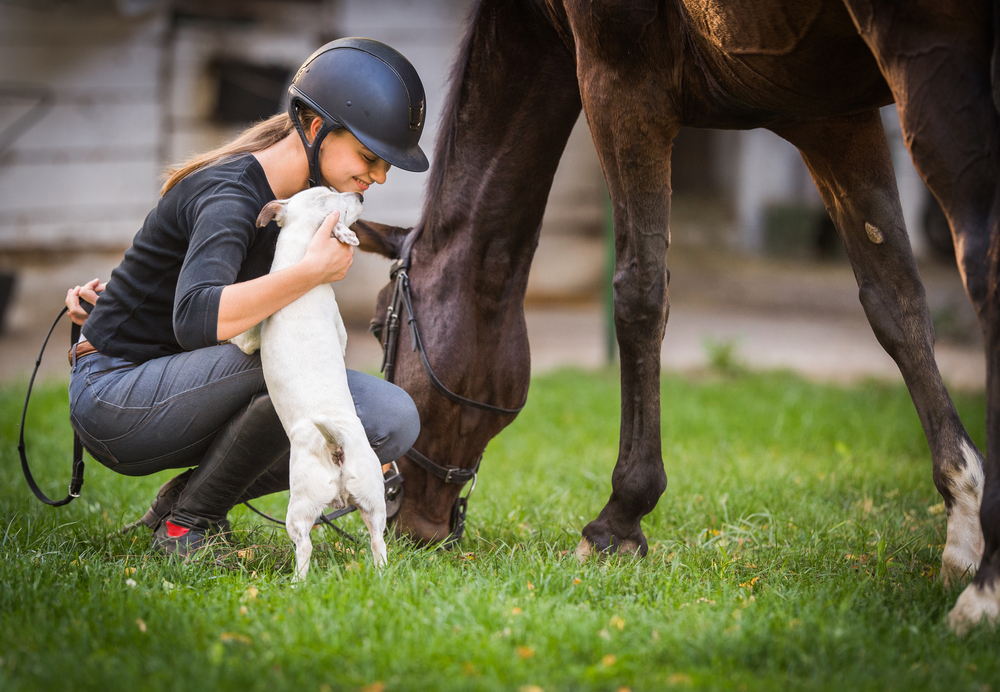
Equine Biosecurity
Tuesdays with Tony
Biosecurity is the practice of decreasing the spread of contagious diseases. As the Clinic Cat, I feel like I’m above such things, though I’ll admit that my docs would argue that one. Whinny, who is the Clinic Mouse and my understudy (more on that soon) is an expert in the spread of disease, as mice carry a lot of responsibility in this area. But let’s focus on horses! From show horses to pleasure horses, biosecurity is important and can easily be implemented into your routine. Prevention is the best medicine, and it’s never too soon to consider how your farm will handle a contagious disease outbreak and what you can do to help decrease the spread of disease and contribute to the general wellbeing of horses in your community. It’s also your responsibility as a horse owner.
The reason to decrease the spread of the disease can be overly simple – no one likes to be sick! In the case of performance horses, illness can have long term effects on respiratory function, increasing the time it takes to bring them back to the fitness level they were at before becoming ill. Diseases can also spread further than you may think. For horses specifically, a sneeze or cough can travel about 150 feet. That’s about the width of a football field! So even if you’re at a trail ride or event and are not necessarily nose to nose with other horses, you may accidentally share a communicable disease.

Respiratory diseases are probably the largest culprit when thinking of highly contagious diseases in horses. Strangles is a common name we think of when considering contagious respiratory disease. Strangles is caused by the bacterial organism, Streptococcus equi subspecies equi and is characterized by a high fever, nasal discharge and enlarged lymph nodes around the throat of the horse that are often draining purulent discharge.
Other contagious respiratory diseases are of viral origin. There are two that we think of most commonly, equine influenza (aka flu) and equine herpes (aka ‘rhino’ or rhinopneumonitis) viruses, but there are lots of others. Common clinical signs of these diseases are coughing, fever, and nasal discharge. In the case of equine herpes virus, different strains can cause abortion in pregnant mares, or neurologic signs in addition to respiratory symptoms. Other contagious diseases in horses include ringworm and Salmonella. Ringworm is a fungal skin infection that can cause circular, itchy lesions with hair loss. Salmonella is a contagious bacterial disease that often presents with fever and severe diarrhea.
All of these diseases can be spread either from horse to horse, or through fomites. Fomites are objects or organisms that can transmit any disease. These can include commonly used equipment, like wheelbarrows, water hoses, pitch forks, bridles, brushes and many other objects. Fomites can also include people! Barn staff, volunteers, visitors, farriers, veterinarians, and you even have the potential for carrying contagious disease! It hurts my pride too much to mention cats or mice, but dogs are definitely a potential risk as well. Basically, anything that can step in, rub against, pet, lick, or sniff a drop of infected horse saliva, snot, or poop could become a Typhoid Mary.

How biosecurity is implemented may vary from barn to barn, but the main principles will remain the same. New horses, or ones that travel to competitions or routinely haul off the property, should be quarantined for a minimum of 2 to 3 weeks when they return to the farm. This duration may vary based on your veterinarian’s recommendations for your farm and situation. In the case of a disease outbreak, this duration is determined based on the diagnosis of the disease and duration that it can be shed, which is often a minimum of 21 days for many diseases. For new horses that have recently traveled, taking daily temperatures is essential in catching a potentially contagious disease early. A horse that already has nasal discharge and is feeling down in the dumps has likely spiked a fever a few days prior and has already been spreading disease.
Be mindful of traffic through the barn. Horses that are sick or quarantined due to recent travel should be placed in an area where there is limited foot traffic. They should also be stabled away from common areas, such as the wash rack or grooming area, and should never share a fence with other horses. Keeping equipment clean and sanitizing stalls and common areas also helps decrease the spread of disease. Be mindful that disinfectants do not work when there is bulk dirt or manure on the surface you’re cleaning.
Of course, vaccination can play a major role in preventing the spread of disease. They are not able to provide 100% coverage, but they offer good protection and can decrease the amount and length of sickness. The timing of giving a vaccination is important since the body needs time in order to reach peak immunity and protection. This is often a minimum of two weeks. Vaccinating the day before a competition or travel unfortunately provides protection too late. Therefore, contact your veterinarian to create a schedule of vaccinations from some of our common contagious diseases that are available.
Even the best managed barns can contract a contagious disease, or you may be at an event where a horse becomes ill. When this happens, do your best not to panic and definitely do not travel if your horse has the potential to have been around another sick horse! Talk to your veterinarian about testing for the suspected disease and what you can do to help mitigate the outbreak. In the case of respiratory diseases, which are the most common to occur while at a competition or traveling, testing often includes nasal swab paired with blood testing, since most respiratory diseases can present in an identical fashion. Repeat testing may have to occur, depending on the disease and situation.
There’s nothing worse than an infectious disease outbreak at your farm, but luckily there are ways that we can both prevent and manage these situations. As always, if you have questions, please reach out to your favorite veterinarian! My docs just released a YouTube video talking about how to look at your farm layout from a biosecurity perspective, so make sure you check that out. For more information, the Equine Disease Communication Center can give you up to date and accurate information regarding equine outbreaks and diseases in your area.
Until next week,
~Tony
P.S. While you’re on my YouTube Channel watching that video, make sure you check out my other videos. I just released the first 5 videos in a new series called Horse Girl Goes to the Vet, which are quite entertaining, if I do say so myself. There will be more coming soon, of course, so make sure you subscribe!
Tuesdays with Tony is the official blog of Tony the Clinic Cat at Springhill Equine Veterinary Clinic in Newberry, Florida. If you liked this blog, please subscribe below, and share it with your friends on social media! For more information, please call us at (352) 472-1620, visit our website at SpringhillEquine.com, or follow us on Facebook!
[jetpack_subscription_form title="Subscribe to Whinny's Wisdoms"]

